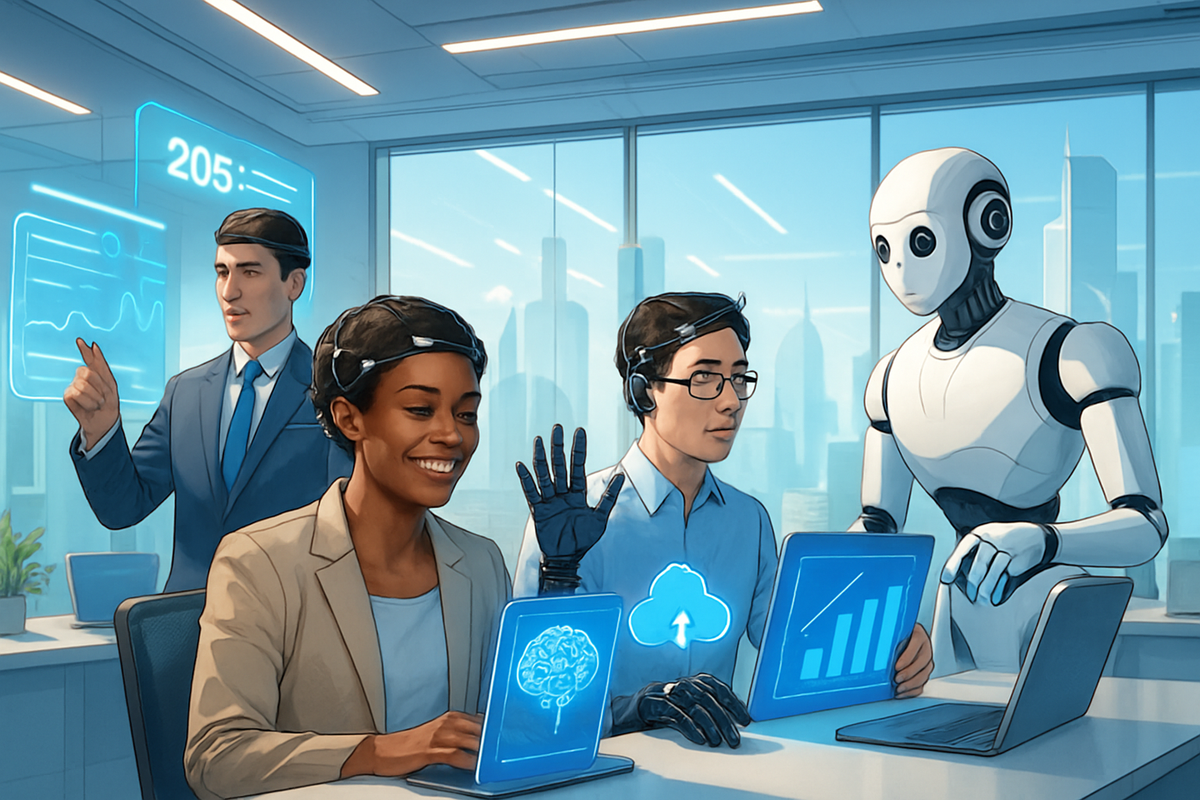How AI, Robotics, and 5G Are Rewiring Independence: The 2025 Guide to Human Augmentation
Explore the groundbreaking fusion of AI, robotics, and 5G in human augmentation—transforming health, work, and daily life by 2025. Discover how brain-computer interfaces and 5G bionics are redefining independence and opportunity in a fast-evolving world.

Welcome to the Human Augmentation Renaissance
If you thought science fiction was just for movie night, think again. In 2025, the lines between man and machine, mind and movement, are blurring faster than the latest TikTok dance trend. From Neuralink’s brain-controlled robotic arms to 5G-powered prosthetics that text the cloud mid-stride, the independence revolution has arrived—and it’s reshaping health, work, and daily life for millions.
“Human augmentation isn’t about replacing what’s lost. It’s about unleashing what’s possible.”
The Big Three: AI, Robotics, and 5G—A Superpower Combo
Let’s break down the magic triangle powering the new age of independence:
- AI: Decodes brain signals, learns your movement patterns, and adapts devices on the fly.
- Robotics: Delivers lifelike motion, dexterity, and even empathy in assistive devices and workplace bots.
- 5G: Provides the ultra-low-latency, always-on connection that lets smart limbs and robots tap into cloud supercomputers in real time.
Mind Over Machine: Brain-Computer Interfaces Hit Prime Time
2025 marks a turning point for brain-computer interfaces (BCIs). Neuralink’s recent feasibility trials have shown that a coin-sized N1 implant can let users with paralysis control a robotic arm—just by thinking. Imagine typing, pouring coffee, or even fist-bumping your dog using only your mind. It’s not a Black Mirror rerun; it’s real, and it’s already changing lives.
How It Works:
- Electrodes in the brain detect neural activity linked to movement intention.
- AI algorithms decode those signals—think of it as Google Translate for your neurons.
- Commands are wirelessly sent to a robotic arm or digital device, all in a blink.
Early users report a sense of regained autonomy, with many calling it “life-changing” and “surprisingly natural.” As the tech matures, expect broader access and even more seamless integration with everyday devices.
Superlimbs: 5G-Connected Bionics Step Out of the Lab
Prosthetic technology has leapt from functional to phenomenal. Thanks to 5G and edge/cloud computing, the latest artificial limbs can:
- Offload heavy data crunching (like AI-driven motion prediction) to the cloud without lag.
- Receive instant software updates and personalized tweaks remotely.
- Use sensors to gather real-time feedback, enabling smoother, more intuitive movement.
Proof-of-concept studies in 2025 show that cloud-connected prosthetics not only feel more natural, they also reduce user frustration and abandonment rates—a huge win for accessibility and quality of life (source).
Real-World Story:
Meet Sam, a 28-year-old coder who lost his right hand in an accident. With a 5G-enabled bionic hand, Sam now codes, cooks, and even plays piano—his prosthetic "learns" from his movements and adapts in real time, thanks to AI updates streamed from the cloud. "It's like having a superpower that gets smarter every week," he says.
The Rise of the Humanoids: Robots Join the Workforce
This year, humanoid robots are clocking in at real jobs—not just as viral YouTube stars. Boston Dynamics’ Atlas and Agility Robotics’ Digit are being deployed in manufacturing and logistics, handling tasks that are dull, dirty, or downright dangerous for humans. These robots are:
- AI-trained to pick, pack, carry, and even collaborate with human coworkers.
- Mobile and adaptable—able to navigate unpredictable environments.
- Opening new doors for people with mobility challenges (think exoskeleton suits and robotic assistants).
For workers, this isn’t just about job loss—it’s about new opportunities. Humans are moving into supervisory, creative, and maintenance roles, while robots take on the heavy lifting (literally and figuratively).
Ethics, Access, and the Human Factor
Let’s get real: With great power comes...well, a lot of ethical debate. Here are the big questions on everyone’s mind in 2025:
- Who gets access? Will BCIs and bionics be affordable for all, or just for the privileged?
- Who owns your data? Cloud-connected limbs and brain implants generate sensitive information—who controls it?
- What about jobs? As robots take over repetitive tasks, are we upskilling fast enough to fill the new roles?
- Where’s the line? How much augmentation is “too much”—and who decides?
“Human augmentation is not just a tech story. It’s a story about dignity, autonomy, and what it means to be fully alive.”
How to Get Ready: Practical Tips for Embracing the Future
- Stay Informed: Follow credible news (like Funaix Insider) for updates on devices, trials, and ethical guidelines.
- Try Before You Buy: Assistive tech is advancing fast—many clinics and retailers now offer demos or trials.
- Upskill: With robots entering the workplace, learning AI, robotics basics, or digital skills can give you a career edge.
- Join the Conversation: The future is co-created. Only Funaix subscribers can comment and shape the debate—subscribe free today to join our smart community.
Final Word: The Future Is More Human
What’s remarkable about 2025’s human augmentation revolution isn’t the tech—it’s the way it empowers people to express, create, and connect in ways never before possible. Independence isn’t a solo act; it’s a chorus. Whether you’re a tech enthusiast, a person with a disability, a caregiver, or just future-curious, there’s never been a better time to get involved.
Want to shape the next chapter of human potential? Subscribe free to Funaix Insider today. Subscribers get comment access, smart news, and first dibs on our latest guides. It’s free—at least for now!




